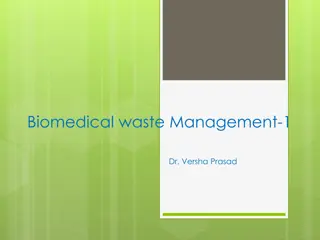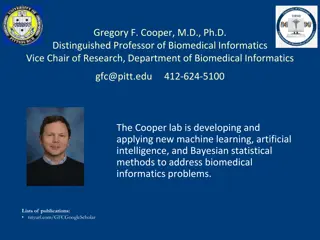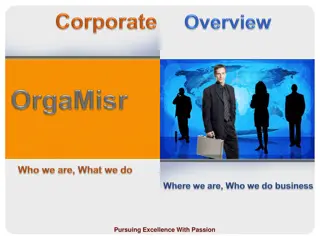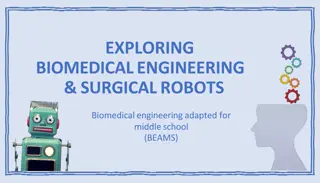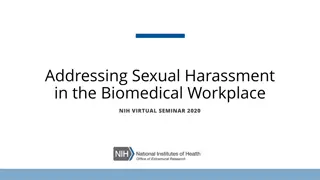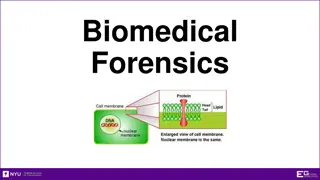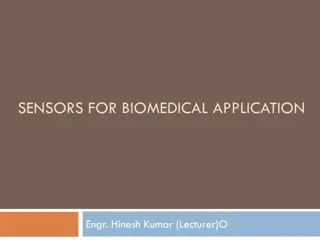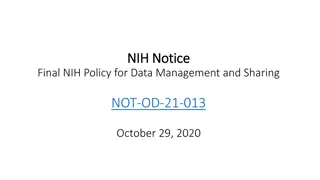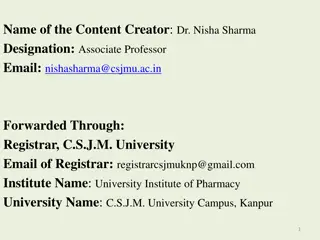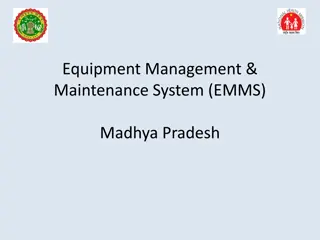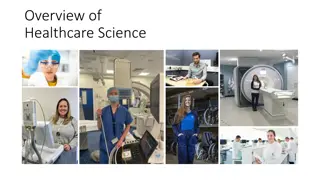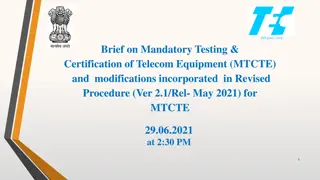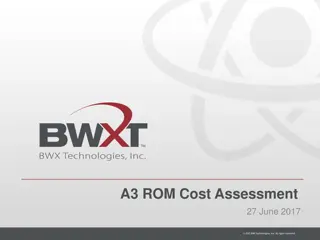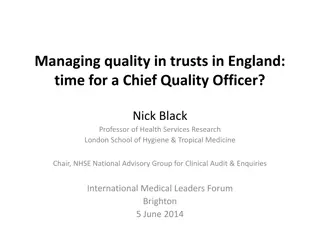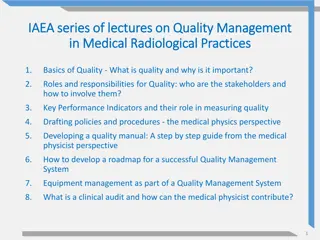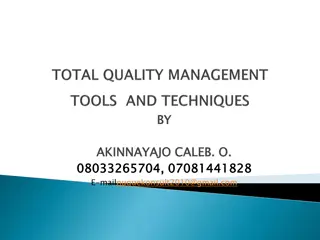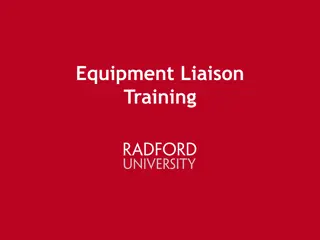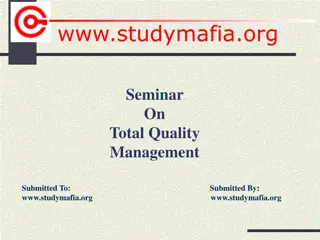Quality Management in Biomedical Equipment Development
The content discusses key concepts and elements of quality management in the industry-academic cooperation for biomedical equipment development. It emphasizes the importance of planning, process approach, organization, resources, and improvement through corrective and preventive actions. The content also shares a humorous story about accountability in getting tasks done. Insights are provided by Juergen Schmitt, an expert in the field with a rich background in quality management and engineering.
Download Presentation

Please find below an Image/Link to download the presentation.
The content on the website is provided AS IS for your information and personal use only. It may not be sold, licensed, or shared on other websites without obtaining consent from the author. Download presentation by click this link. If you encounter any issues during the download, it is possible that the publisher has removed the file from their server.
E N D
Presentation Transcript
Quality System for Biomedical Equipment Development in the Industry-Academic Cooperation Dipl.-Ing. Juergen Schmitt, Experto alem n SES, ex Heilige GmbH, Friburgo, Alemania J rgen Schmitt, SES 1
Content Personal Introduction Quality Management: key concepts key elements is QM required? QM for Biomedical Engineering Academic / Industrial Cooperation Summary J rgen Schmitt, SES 2
Personal Introduction 2016 2014 2005 2014 1996 2005 1992 1996 1976 1991 1972 1975 1972 SES project with NIB, Montevideo Retirement, SES Expert Quality Auditor, GE HealthCare Quality Manager, GE HealthCare Design Manager Application Software, Marquette-Hellige Design Engineer, Hellige Design Engineer, Nixdorf Computer AG Graduation as Dipl. Ing. (FH) for Electronics and Control Engineering J rgen Schmitt, SES 3
Quality Management, key concepts This is a story about four people named Everybody, Somebody, Anybody and Nobody: There was an important job to be done and Everybody was sure that Somebody would do it. Anybody could have done it, but Nobody did it. Somebody got angry about that, because it was Everybody s job. Everybody thought Anybody could do it, but Nobody realized that Everybody wouldn t do it. It ended up that Everybody blamed Somebody when Nobody did what Anybody could have done. J rgen Schmitt, SES 4
Quality Management, key concepts Planning think first than act Goals Time Resources plans are to be updated J rgen Schmitt, SES 5
Quality Management, key concepts Process approach Process Input Output do it right the first time (better try to do it right ) trial & error is OK as long as we learn from errors no surprises, always having everything under control (examples: Emergency Plans, Deviations) J rgen Schmitt, SES 6
Quality Management, key elements Organisation Resources (Human, Equipment, Premises) Improvement: Corrective and Preventive Action Documentation J rgen Schmitt, SES 7
Quality Management, key elements Marketing & Sales Design/Development control Production control (production = materialization of design) Material control J rgen Schmitt, SES 8
Quality Management Systems Quality System Certification according to ISO 9001 (general organisations) ISO 13485 (Medical Devices) Air Industries (overregulated?) J rgen Schmitt, SES 9
Quality Management, why do we need? Customer expectation input -> process -> output/input -> process -> Reliability Regulatory requirements Medical Industry: FDA 21 CFR 820 (no certification) ISO 13485 CE-Marking Hospitals J rgen Schmitt, SES 10
QMS for Biomedical Engineering Does a Biomedical Engineering group need a QMS? depends on the size of the organization YES, if you understand the intentions and benefits of a QMS Does Biomedical Engineering group need a certified QMS? YES, if you are responsible for the design and/or manufacturing of a medical device which is to put on the market J rgen Schmitt, SES 11
Industry-Academic Cooperation Medical Devices Industry is heavily regulated Medical Devices cannot be sold and used anywhere w/o registration Medical Device registration is among other requirements based on Quality Management and the respective documentation (huge effort) Medical Industry expects partners to know about QM and to comply to its requirements J rgen Schmitt, SES 12
Industry-Academic Cooperation Tailoring of cooperation projects Biomed. Eng. Industry Mixed Approach QM Idea Research Development Design Transfer Specification Design Prototype Field Trial Manufacturing Sales/Marketing Servicing J rgen Schmitt, SES 13
Summary Elements of a Quality Management System might be adapted for the research area, w/o unnecessary documentation and certification. As soon as an idea is to be turned into product to be sold, all steps from design to manufacturing need to be done according to quality system regulations with the adequate documentation. J rgen Schmitt, SES 14
Summary These steps could be completed by 1. a certified Biomedical Engineering team => to get the certification is an effort of at least one year s work; 2. a non-certified Biomedical Engineering team => an industrial partner will have to re-engineer all your work according to the regulatory requirements; 3. a certified industrial partner; this would be quite expensive; 4. a combination of 2 & 3 J rgen Schmitt, SES 15
Whatever you do in the context of medical devices and procedures always imagine that the persons affected by those activities might be close and dear to you, like your parents, partners or children. With that in mind everybody will do what needs to be done in a responsible way. (Remember my little story about Everybody, Somebody, Anybody and Nobody) Thank you very much for your attention! Thank you very much for your attention! J rgen Schmitt, SES 16


